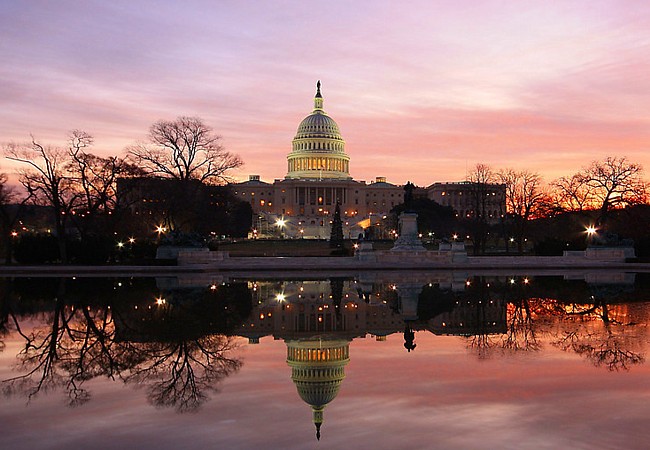|
Scenic USA - Washington DC Capitol Hill |

| Photo by Brad Troy |
Capitol Hill, the largest residential district in the District of Columbia, was chosen as the site of America's first Congress House by Pierre L'Enfant in 1791. Said to be a pedestal waiting on a superstructure, L'Enfant's plan set the Capitol Building on the crest of the hill of New Troy, pronouncing its grandeur. Sometimes referred to as Jenkins Hill, the site is one of the oldest communities in Washington DC.
In the early years few congressmen established permanent homes around the Capitol Building, but lived in boarding houses nearby. There is no evidence of these early congressional dwellings, but have been replaced with a various mixture of Federal townhouses, small frame homes, and ornate structures following Italianate, Queen Anne, Romanesque and Eastlake designs.
The U.S. Capitol Building is one of the most impressive structures in America. An open competition was staged by President Washington and Secretary of State Thomas Jefferson, hoping to receive a satisfactory design for the new country's Capitol Building. The winning design came from Dr. William Thornton living in the British West Indies at the time. Although arriving after the competition was closed, Thornton's plan was approved by the commission. The cornerstone was laid by George Washington in 1793, followed by completion of the North Wing by 1800. Saved by a rain storm during the War of 1812, the British had set it ablaze, hoping to destroy the structure. Over the last two centuries the Capitol Building has undergone numerous refurbishment and restoration projects. An estimated 3 to 5 million visitors flock to Capitol Hill each year, enjoying this symbol of democracy.
Area Map

|
More Area Attractions |
|
Copyright © 2024 Benjamin Prepelka
All Rights Reserved
